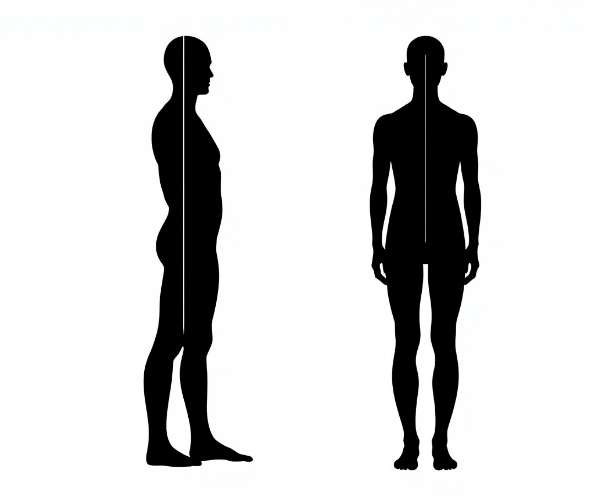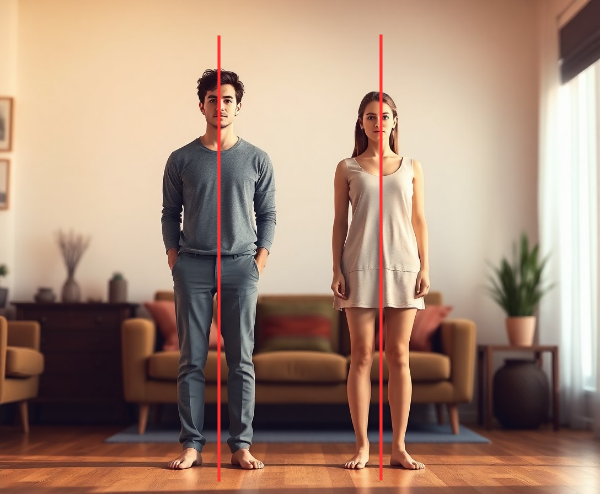🧭 Individual Technique in Kizomba: Let’s Start with the Axis
Part 1: Your Axis — Your Support, Your Freedom, Your Superpower
In Kizomba, just like in any partner dance, before you can truly connect with your partner, you need to learn to connect with yourself. When we talk about the foundations of individual technique, everything begins with your axis.
📌 What is the Axis in Dance?
Imagine there’s an invisible line running vertically through your body — from the crown of your head to the soles of your feet. That’s your axis.
When you're aligned with it — you're balanced, centered, and in control.
When you’re off it — you wobble, lose stability, and each step becomes a small battle for control.
In Kizomba, this is even more critical: the dance is close, slow, and subtle. Every millimeter matters. And if you’re collapsing into your partner — they’ll feel it immediately.
🎯 Why the Axis Matters — for Both Roles
🕴 For Leaders:
- Without an axis, you can't lead with precision. If you're unstable, you unconsciously lean on or cling to your partner.
- When you try to turn or slow down, you can’t control your timing because you're not balanced.
- In more complex moves (waves, stops, cascades, directional changes), your partner needs to feel your stability as a base.
✅ Example: You lead a side step, but your own balance is off. Instead of a clear sideways motion, your weight shifts diagonally forward. Your partner gets confused, the timing slips, the connection breaks — all because the axis wasn’t there.
💃 For Followers:
- Without an axis, you can't respond clearly to the lead. Even if the leader’s signals are perfect, your body delays or overreacts, making it harder to follow.
- You start compensating with your arms, shoulders, or chest — creating muscular tension that tires both of you.
- A stable axis allows you to be light but responsive — not passive, but present.
✅ Example: The leader gives a subtle signal for a pause with a soft sway. Without your axis, you sway like a palm tree in a storm — the moment of musicality is lost.

⚖️ Axis ≠ Being Stiff
Let’s be clear: having an axis doesn’t mean becoming a statue.
Your axis is a dynamic center — like a tightrope walker or a ballet dancer. They’re not frozen; they’re constantly managing balance in motion.
🧠 How to Feel Your Axis
🎯 Micro-Experiments:
1. Closed-Eye Test
Stand tall, feet hip-width apart. Close your eyes. Are you swaying? That means your axis isn’t stable yet. Now reach through your crown, soften your knees, gently tuck your pelvis — feel how your body starts to settle.
2. Wall Test
Stand next to a wall. Shift your weight onto one leg and lift the other slightly. Are you leaning into the wall? Try again — find your balance point. When you're truly on your axis, you won’t need the wall at all.
⚠️ Think Your Axis is Fine? Think Again
Many dancers spend years in Kizomba — attending socials, festivals, and classes — and still unknowingly struggle with their axis.
It’s not just a beginner’s issue. The difference is: experienced dancers compensate better, so it’s less visible, but still very much felt — especially by your partner.
So if you’ve been dancing for a while and thinking:
"Axis? That’s basic. I’m beyond that.”
Do yourself a favor — check again.
✅ How to Check Your Axis with Simple Turns
Here’s a quick self-test you can try right now:
- Slow pivot turn on your own — no partner, no momentum.
- Can you turn around yourself in place without falling into your foot? Without stepping wide or swinging your arms for balance?
- Try the same turn on one foot — slowly.
- Can you keep your posture lifted and your movement clean?
- If your upper body wobbles or your free leg floats around for balance, that’s your axis saying: “Help.”
- Record yourself from the front and side:
- Look for:
- Hips swinging or collapsing?
- Shoulders tilting?
- Neck leaning forward or back?
- Even subtle misalignments will show up.
Remember: you don't have to look off-balance to feel off-balance.
And your partner will feel it even if you don’t see it.
🔁 What the Axis Looks Like in Dance
Here are common situations in Kizomba where lack of axis breaks the movement:
- Side steps — the leader collapses sideways and drags the follower instead of sending a clear signal from the center.
- Turns — without an axis, the body twists unevenly: the upper body goes, but the hips stay behind, throwing off timing and balance.
- Pauses/stops — without an axis, you can’t execute a clean, musical pause. You either fall into it or fidget through it.
- Creativity & styling — you can’t improvise if your body’s fighting for balance. If you can’t hold yourself, how can you offer clarity to your partner?
🏋 Exercises to Train Your Axis
(yes — you can do them at home, on the subway, even while cooking)
1. Axis + Weight Transfer
Stand tall, slowly shift your weight side to side. Breathe. Feel your center move. In Kizomba, there’s no rush — learn to savor the shift.
Tip: Do it to music — walk and shift while keeping your axis upright and centered.
2. Walk with a Book on Your Head
Classic but powerful. If the book falls, you're off-axis. It also improves posture and neck alignment.
Pro tip: Walk around your apartment like you’re auditioning for a perfume ad.
3. Balance Turn
Stand on one leg. Slowly rotate 180 degrees around your own axis — no stepping, just turning. Start with eyes open, then try with one eye closed to challenge your balance.
4. Axis in Everyday Life
- In public transport: stand without holding on. Can you keep your balance when the train shakes?
- In the shower: balance on one leg while washing or brushing your teeth — it’s core + coordination in one.
- In the kitchen: while water’s boiling or the coffee’s brewing, practice weight shifts or pivot turns mindfully.
💬 Real Talk from the Dance Floor:
- Check your axis once a week — just like stretching or brushing your teeth.
- Work with your body like it's a relationship. Don’t ignore the little signs of imbalance.
- A "bad" dance day with awareness is better than a "good" day dancing on autopilot.
